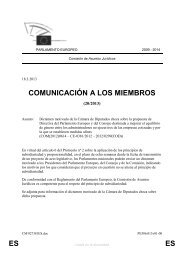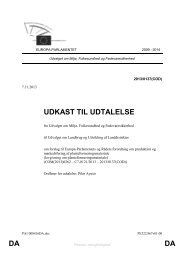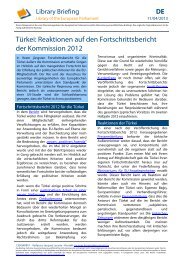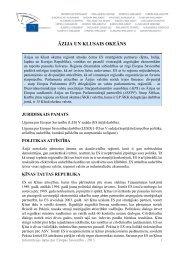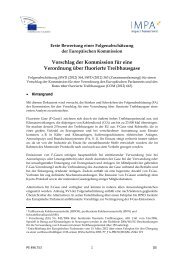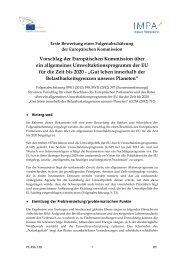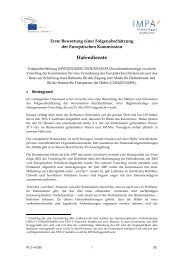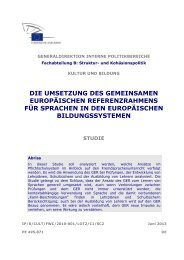Link to the study - European Parliament - Europa
Link to the study - European Parliament - Europa
Link to the study - European Parliament - Europa
You also want an ePaper? Increase the reach of your titles
YUMPU automatically turns print PDFs into web optimized ePapers that Google loves.
Nuclear Decommissioning: Management of Costs and Risks<br />
____________________________________________________________________________________________<br />
Table 4: Extrapolation of <strong>the</strong> costs of dismantling <strong>the</strong> current fleet, 11 international<br />
references, in billion EUR in 2010<br />
COUNTRY AND<br />
AMOUNT OF<br />
ESTIMATING<br />
METHODS<br />
EDF SWEDEN BELGIUM JAPAN<br />
USA<br />
(3 METHODS)<br />
UK<br />
GERMANY<br />
(4 METHODS)<br />
Extrapolation for<br />
58 reac<strong>to</strong>rs<br />
18.1 20 24.4 38.9<br />
27.3<br />
33.4<br />
34.2<br />
46<br />
25.8<br />
34.6<br />
44<br />
62<br />
Source: (CdC 2012)<br />
As can be seen <strong>the</strong> estimated fleet decommissioning costs, as compared on a relatively shallow basis<br />
and not considering a detailed analysis (facility-specific estimates, special effects, national framework<br />
conditions, etc.), are in most cases in <strong>the</strong> order of EUR 20 billion, with a variation range of a fac<strong>to</strong>r of<br />
two (several cases) <strong>to</strong> three (single case, maximum). The identified differences are relevant for <strong>the</strong><br />
case <strong>the</strong>y were calculated for (how large shall set-aside funds for decommissioning be), but are <strong>to</strong>o<br />
shallow <strong>to</strong> yield a reliable comparison base for specific facilities in o<strong>the</strong>r countries, of a different size<br />
and operating his<strong>to</strong>ry, etc.<br />
Conclusions<br />
The cost estimates for <strong>the</strong> decommissioning of <strong>the</strong> existing reac<strong>to</strong>rs that are under shut down state at<br />
EDF are made on a basis:<br />
Of facility-specific decommissioning plans that reflect <strong>the</strong> recent planning progress status and<br />
are detailed enough <strong>to</strong> yield reliable estimates for <strong>the</strong> purpose <strong>the</strong>y are made for (evaluation of<br />
<strong>the</strong> set-aside funds within EDF’s assets);<br />
Of a continuous update, so that <strong>the</strong> estimates reflect <strong>the</strong> current execution state and <strong>the</strong> recent<br />
knowledge/experience status of <strong>the</strong> projects;<br />
That yields robust results, if <strong>the</strong>se are based on <strong>the</strong> same price base (reference year).<br />
The cost analysis estimates are state-of-<strong>the</strong>-art and can be used as best-practice reference: cost<br />
analysis for decommissioning projects should not be performed with a smaller degree of detail or<br />
with less reliable methods.<br />
The analysis for <strong>the</strong> decommissioning of EDF’s complete reac<strong>to</strong>r fleet under operation is less reliable<br />
as it simply up-scales figures gained from one project (Chooz A) that is currently in an early state of<br />
decommissioning <strong>to</strong> <strong>the</strong> complete reac<strong>to</strong>r fleet <strong>to</strong> yield <strong>the</strong> necessary reserves of funds for this<br />
purpose. The doubts that <strong>the</strong> 'Cour des Comptes' has raised (CdC 2012) concerning <strong>the</strong> reliability of<br />
those long-term estimates are <strong>the</strong>refore understandable. Those estimates do not contribute <strong>to</strong> <strong>the</strong><br />
identification of best practices and are not used any fur<strong>the</strong>r.<br />
65




